
Rediscovering Japan

Rediscovering Japan
Travel (Ooita Part 2 (Usuki, Hiji, Kitsuki, Taketa))

by tomizuta
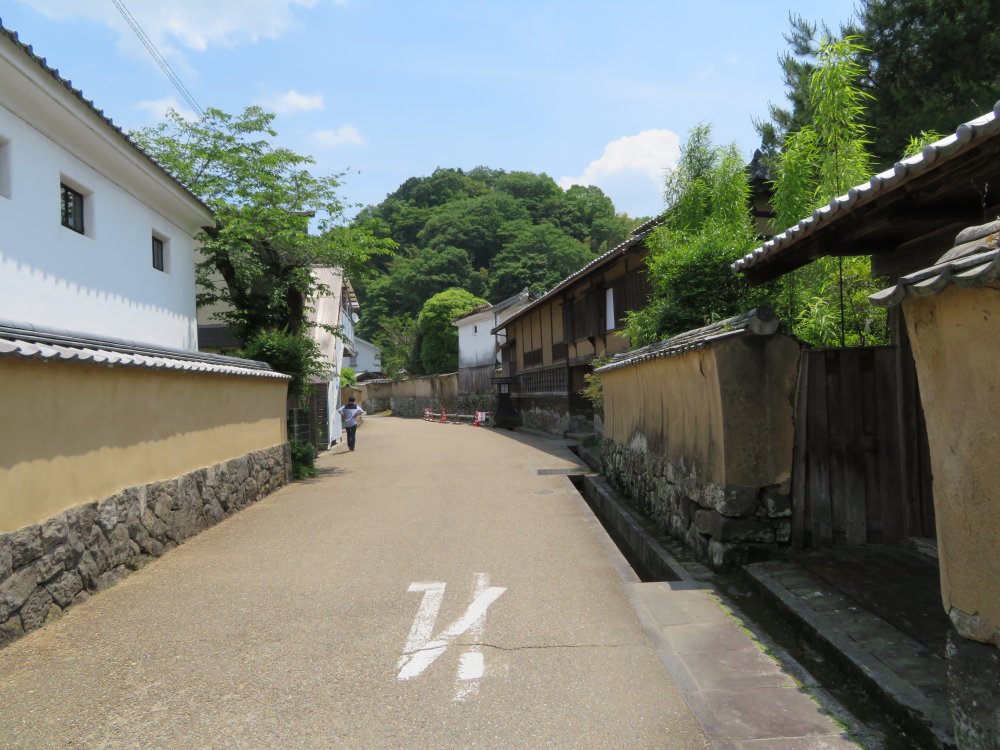
The old samurai residence area in Taketa. Ooita boasts many little Kyotos including Taketa.
The following morning, we went to see the Stone Buddhas of Usuki, which is designated as a national treasure. This is located about five kilometers inland of the coastal city of Usuki. The stone Buddhas are located in four places relatively adjacent to each other. Compared with Kumano-magaibutsu access to the Buddhas is much easier. From the car park at the bottom, after paying an admission fee of five hundred forty yen per person, the path linking the four areas is paved and much less steeper. I understand that the statues are the work of unknown sculptors dating from the late Heian to early Kamakura period, probably late 12th to early 13th century. The statues have been eroded by standing there for close to a millennium in the rain and wind, but still retain tranquil and lively features. The faces of the Buddhas are round and many with pleasant smiles, typical of statues from the late Heian period under influence of the Tung Dynasty of China.
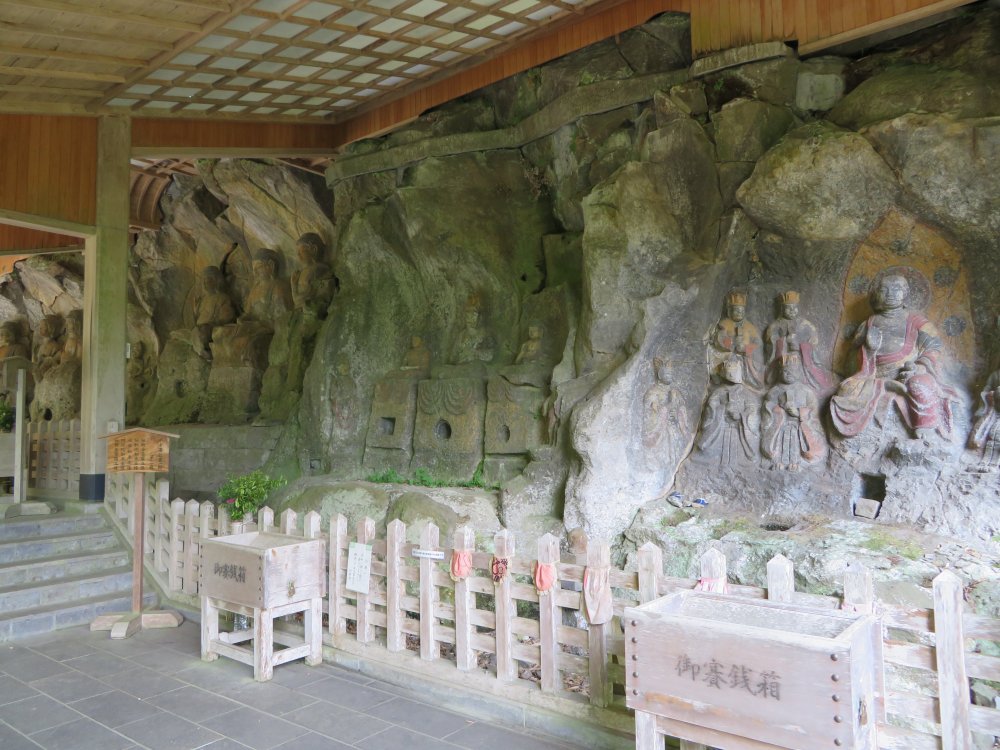
The stone statues are in four areas. This is the second group of statues you visit.
The statues at the top of the path are the only ones you need to climb
a few steps up a ladder to view. The audio guide informed us that this
was the only Buddha facing west where people believed that paradise existed.
Under advice of the audio we also took a look at the side of the head of
the main Buddha in the middle and found that the back of the statue had
been carved away and not embedded in the cliff. The audio informed us that
this was because the substance of the cliff was tuff made from volcanic
lava which is softer and easier to chisel.
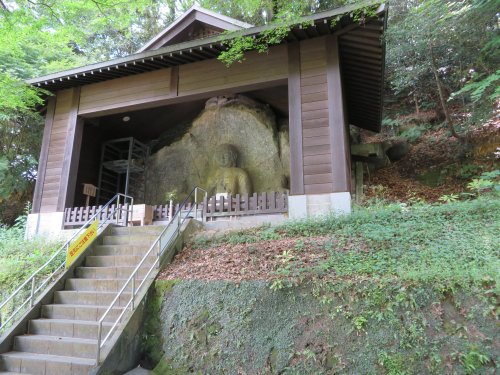
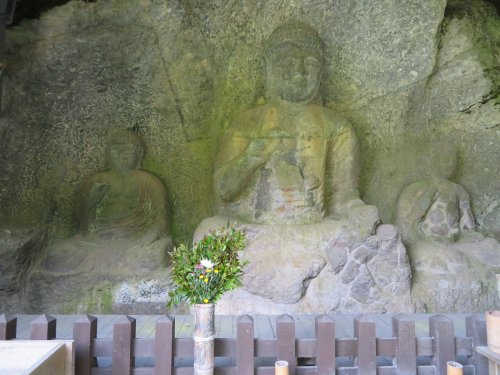
You need to go up the steps to view the third group of statues at the top.
We then went to visit the older section of Usuki City. Usuki City developed as the joukamachi (township in front of a castle) of Usuki Castle, which was the main castle of Sourin Ootomo who at one time had conquered a large part of northern Kyuushuu in the late 16th century. After the Toyotomis were defeated by the Tokugawas in the early 17th century, the Inaba family became the feudal lord of Usuki until the Meiji Restoration. Sourin Ootomo who took up Zen initially, later converted to Christianity, and for a brief period in the late 16th century, Usuki was the center of missionary activities in the Kyuushuu area. Unfortunately, as Christianity was banned completely by the early 17th century very few remains have survived. We visited a district called Niouza, which has retained some samurai residences. There is also a tourist rest place which was formerly a Buddhist temple. From the upper floor you can command a very good view of the castle town (joukamachi) of Usuki. Some think that Usuki also is a little Kyoto (shou-Kyouto) alongside Hita, Kitsuki and Taketa in Ooita.
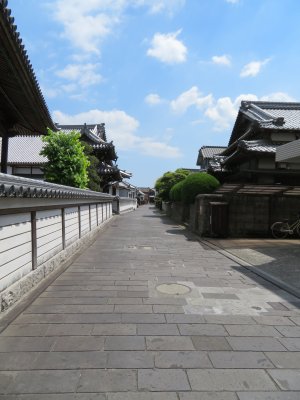
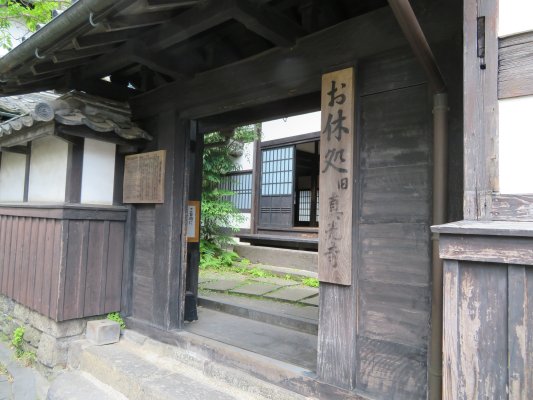
The historic district of Niouza (left) and the tourist rest place (right).
From Usuki we went north to Hiji town on Beppu Bay. Hiji is an old castle town under rule of the Kinoshita family, descendants of a nephew of Hideyoshi Toyotomi’s wife. A famous delicacy from this area is flounder. Flounders caught in the sea beneath Hiji Castle area are appreciated because it is less muddy and plain, ideal for cooking. This is called shiro shita karei (flounder under the castle). We were lucky as May is the start of the season for flounders. We went to a restaurant specializing in shiro shita karei dishes and ordered a five course lunch meal. The flounder course menu is comprised of sashimi, stew, tempura of flounder followed by rice and desert. The lunch course is affordably priced around four thousand yen. It is a very light and healthy menu. I found the taste quite similar to a blowfish. This is a cuisine you should certainly try if you are travelling in this area.
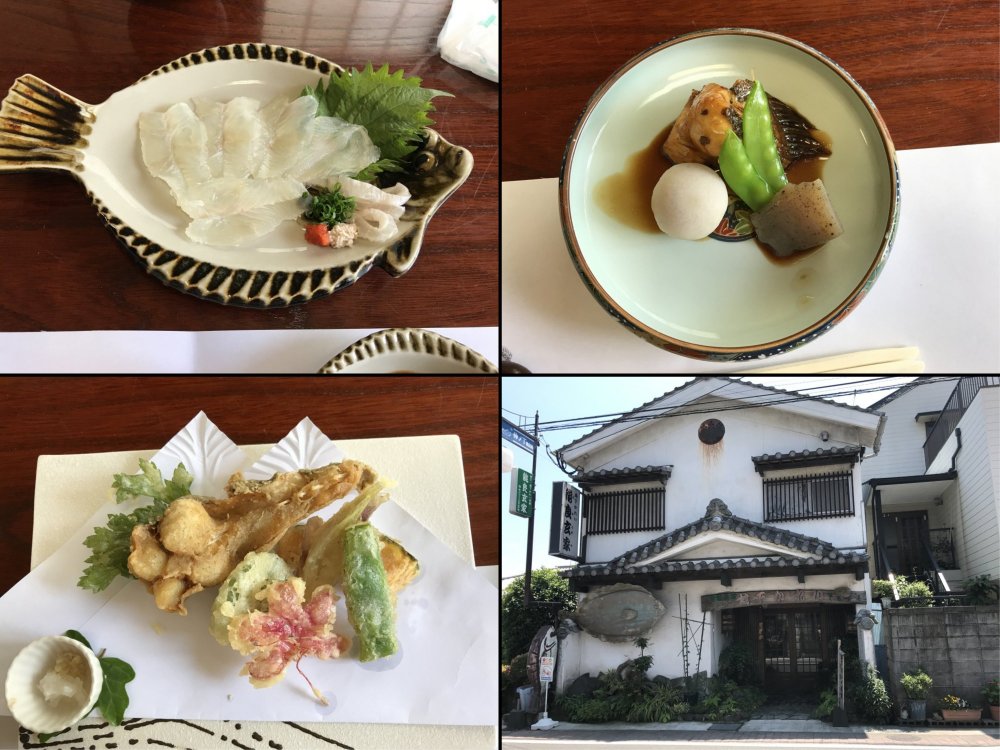
Shiroshita flounder is a dish you should not miss in Ooita. Clockwise from bottom left, fried, sashimi, stew and the restaurant.
Our next visit was to the northern neighbor of Hiji, Kitsuki City. We first paid a visit to the castle ruins which is on a hill top about fifty meters above sea level. This has now become a city park and a keep has been constructed in modern years as a museum. I mentioned that there is a stone culture in Kunisaki Peninsular. About a hundred and seventy stone objects found in the vicinity, some dating back to the 15th century have been relocated to the castle grounds for preservation.
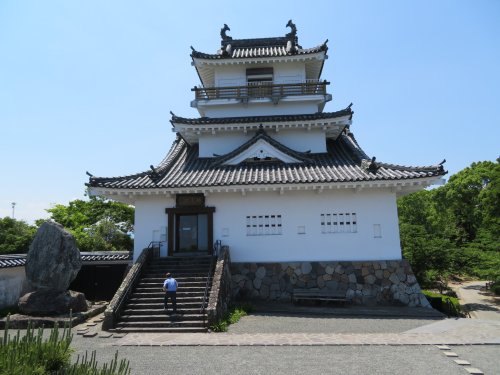
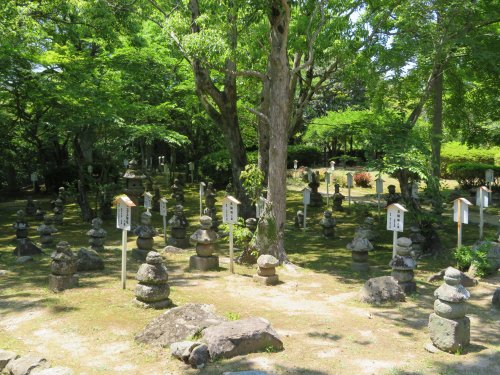
Kitsuki Castle (left) and the numerous stone objects in the castle grounds (right)
Kitsuki is also regarded as a little Kyoto and is famous for its unique sandwich style township. The old township is composed of two hilltops running side by side where the samurai residences stood and a lower row of merchant shops sandwiched by the two hills. We parked our car in a car park on the southern side hill and toured the township.
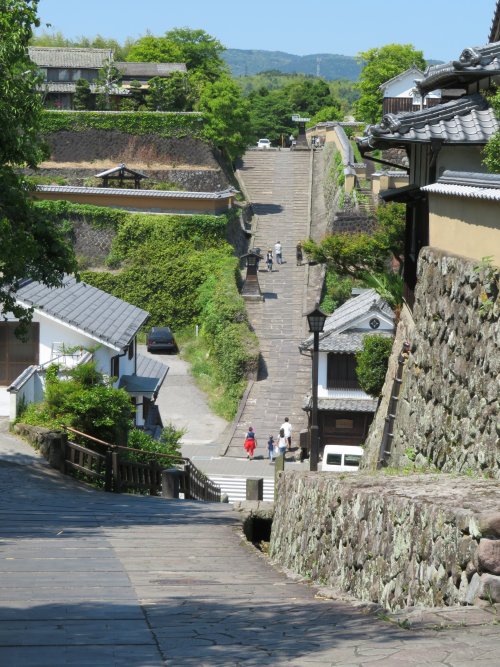
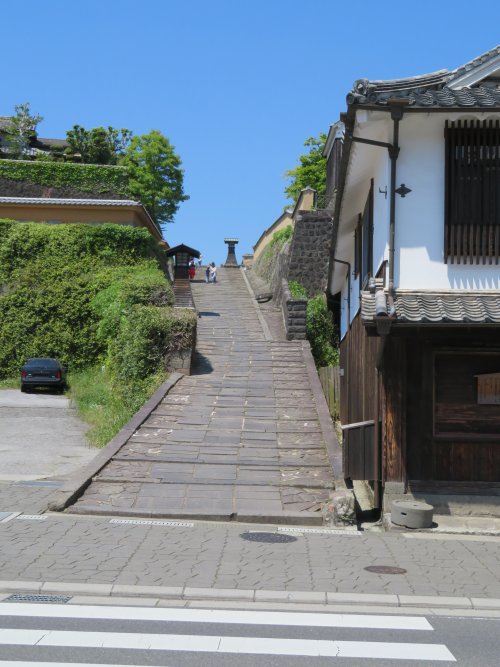
(left) View from the southern samurai area. Merchant district at the bottom and the samurai residence area above. The southern samurai residence area from the bottom merchant district (right)
The samurai residences on the opposite hill have been particularly well
preserved. I recalled that the area was frequently a site for film shooting.
It was a warm day, and we entered a café set in a former samurai residence
for some ice cream.
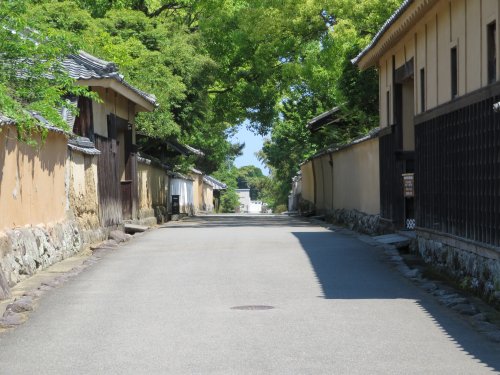
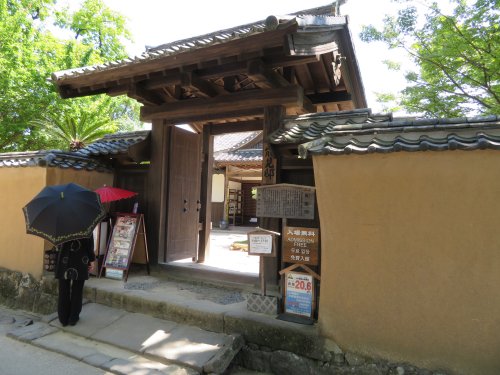
Well preserved samurai residence area often a site for film shooting (left) and the cafe set in a former samurai residence (right)
Usually rows of merchant shops face each other across a narrow lane in between, but I wondered why the lane here separating the rows is so much wider.
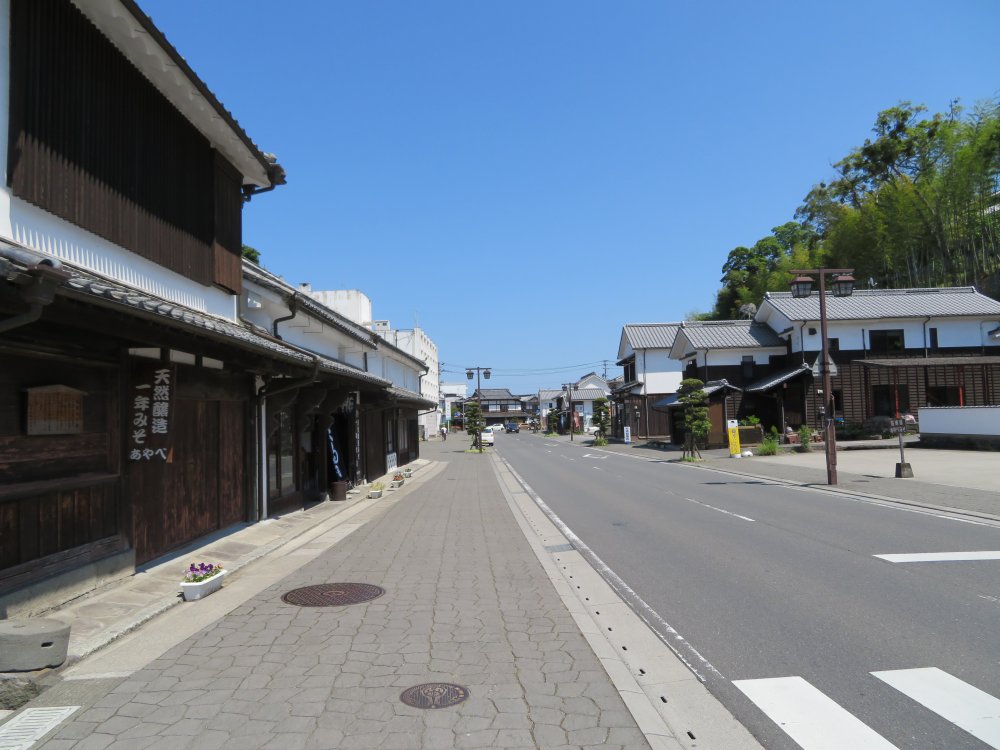
The merchant shop district of Kitsuki
We stayed the night at the onsen city of Yufuin. There are many onsens
in Ooita, particularly the Beppu area. Less than ten kilometers south of
Yufuin is Yunotaira onsen the history of which can be traced back to the
Kamakura era (late 12th to early 14th century). Compared with Yunotaira,
Yufuin was less known I understand. It was in the 1920s that luxury ryokans
were built in Yufuin. As there are more than eight hundred onsen sources
in the area, the ryokans are not crammed around one river bank as seen
in many areas. Yufuin steadily increased its prominence especially among
ladies, differentiating itself from other onsens by avoiding creating an
entertainment district and the organizing of annual film and concert festivals.
Nowadays it has become a very popular onsen and is incorporated in many
tours to the Kyuushuu area. I walked up the high street towards the station,
but unfortunately wasn’t that impressed. For a Japanese person, I miss
the traditional onsen town feature, and the high street seemed to be a
blend of traditional shops and trendy western style stores. The rates per
night are usually much more expensive compared with the traditional onsens.
I wrote about the Christian history of this area. Fifty or more graves
of Christians were discovered in a graveyard in the back mountains of Yufuin.
As Christianity was banned, those that maintained their faith had to do
so in secret. These Christians were called kakure-Christians (Christians
in hiding). They faced continuous attempts by the authorities to expose
and convert to Buddhism. It was a difficult task to find these kakure-Christian’s
graves among the many graves in the graveyard. I thought it very strange
that they had been buried in a graveyard together with contemporary as
well as more recent non-Christians. Surely then, there must have been some
sympathy towards these kakure-Christians in the community, as anyone supporting
or hiding these kakure-Christians would have faced severe punishment from
the authorities if found out.
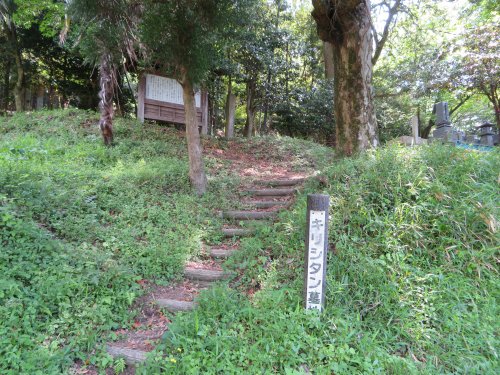
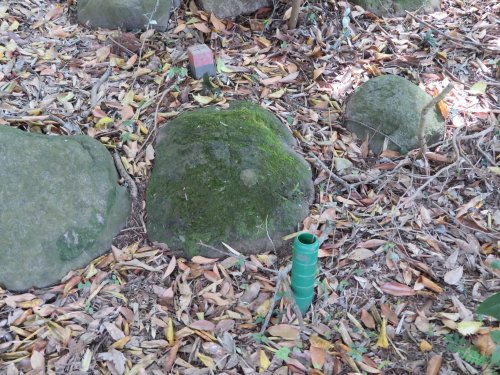
(Left) The guide post says Christian graveyard. (Right) It was a difficult task to find these kakure-Christian’s graves among the many graves in the graveyard.
The last place for us to visit in Ooita was Taketa City, also regarded
as a little Kyoto. Taketa City is located in the south western part of
Ooita on the border with Kumamoto Prefecture, about thirty kilometers south
of Yufuin. Taketa is the castle town of Oka Castle. I introduced Bicchuu
Matsuyama Castle as a mountain top castle in the article on Okayama (Takahashi).
Oka Castle, first constructed in the 12th century sits atop a hill three
hundred meters or so above sea level, and in the Edo era housed the Nakagawa
family as the local feudal lords. Before visiting the castle we went to
explore the township. We wished to get some background information at the
local history museum, but unfortunately found that it was closed Mondays.
We turned right into the former samurai residence area.
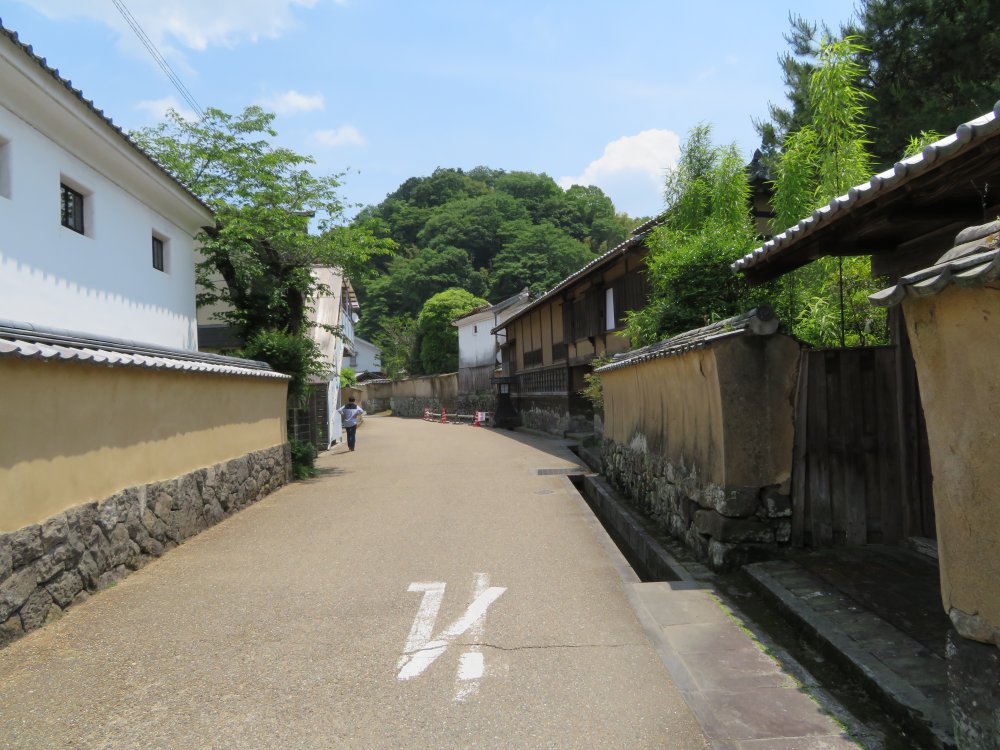
We turned right into the former samurai residence area.
Further ahead and tucked away from the main road was a historic site that
caught our interest. This is an underground chapel where the kakure-Christians
congregated. It is a very small chapel, four meters by five with a height
of less than two meters making use of a much older tomb from before the
8th century, I understand.
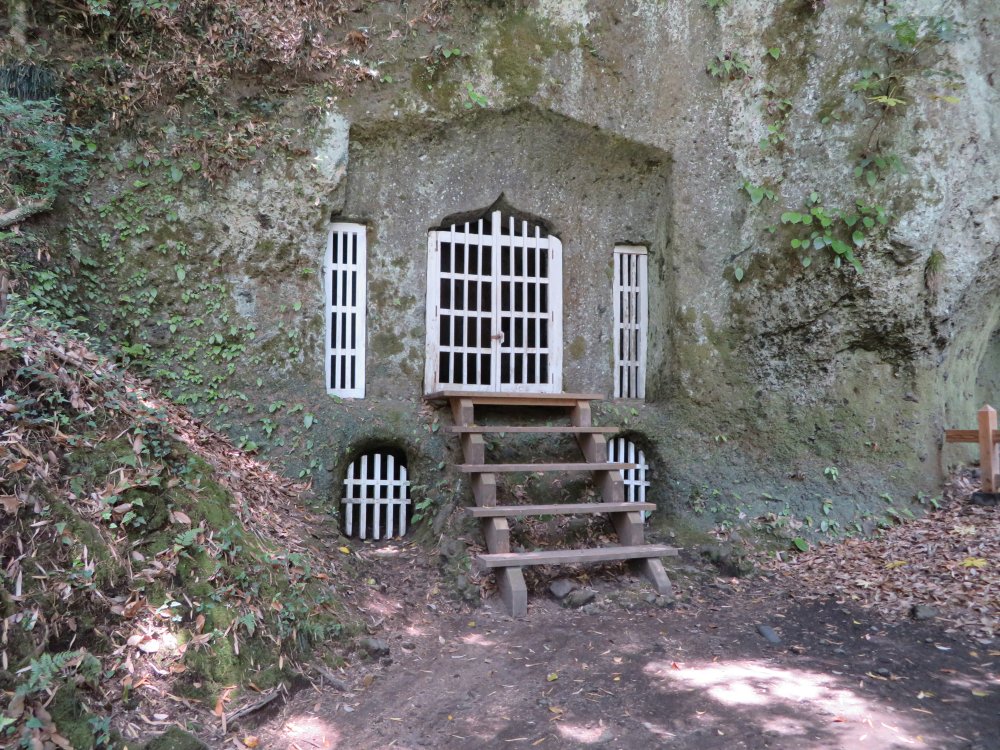
An underground chapel where the kakure-Christians congregated
Not many restaurants were open on Mondays, but we found a local restaurant
recommended in our guidebook. Ooita is famous for fried chicken, so I ordered
a course menu composed of local delicacies and fried chicken. Looking at
the town map, we found a place we needed to visit. This was a Buddhist
temple building built by the craftsmen from Hida in the mountains that
were employed to construct Toushouguu in Nikko, a World Heritage site.
The Nakagawa feudal lord had been assigned the post of overseeing the construction
of Toushouguu, and after it was completed asked the craftsmen to come to
Taketa to build Aizendou. This is the oldest surviving building in Taketa
from the early 17th century.
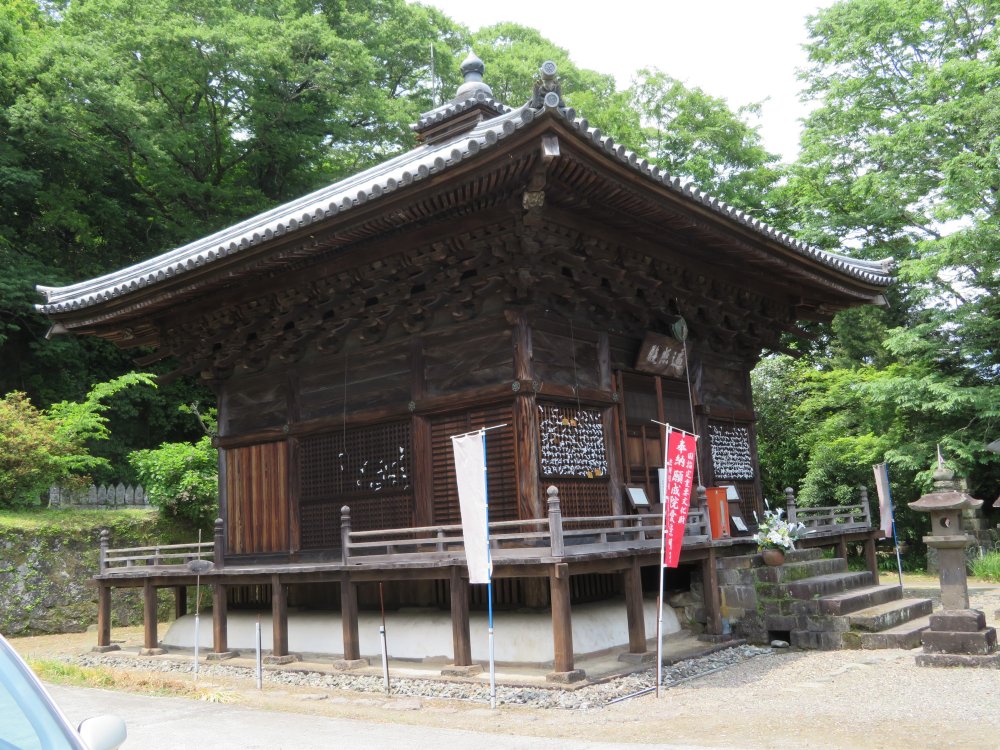
Aizendou was built by the same craftsmen that built Toushouguu in Nikko in the early 17th century.
The final visit was to Oka Castle. One of the earliest western style composers
is Rentarou Taki whose father came from Ooita and ancestors from Hiji that
I wrote above. He died very young at the age of twenty-four in 1903. Among
his most famous works is a tune called Koujou no tsuki, literally Moonlight
at the castle ruins. It is believed that the ruins of Oka Castle inspired
him to compose the tune. It isn’t that steep a climb from the car park
to the castle site on the top. The gift shop by the car park was playing
Koujou no tsuki endlessly, which died out as we approached the top. Atop
you can view the area were the samurai residences stood such that they
could rush to protect the main castle in an emergency. Following that there
were sites of warehouses to store the food and supply for the castle followed
by the area where the feudal lord’s family lived, finally leading to the
main castle site. Only the rock foundations have survived, and it wouldn’t
be a surprise to me at all if Rentarou was inspired to compose the tune
being there under moonlight.

Climbing up to Oka Castle.